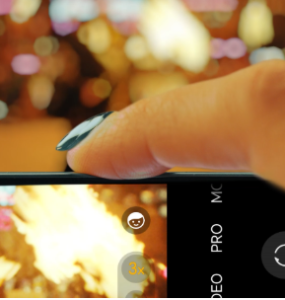
Smartphones are indispensable in modern life, linking us to the world through communication, entertainment, and productivity tools. These pocket-sized marvels are packed with advanced technology, making them powerful yet delicate devices. A typical smartphone model such as HONOR 400 Lite boasts impressive specs: a 6.7-inch AMOLED display, dimensions of 161mm x 74.55mm x 7.29mm, and a weight of approximately 171g. With vibrant colors and multi-touch support, these devices present a seamless experience. To truly understand a smartphone’s lifespan, we must consider both the hardware and software aspects along with user interactions and maintenance practices. Choosing wisely when buying a phone and using it responsibly daily will significantly impact its performance, durability, and value over time.
Smartphones typically last between two to four years. This lifespan depends on various factors such as build quality, usage patterns, and technological advancements. On average, users find themselves upgrading when the phone begins to lag or when newer, more advanced features overshadow the existing device. Manufacturers often design smartphones with a specific market lifespan, matching the rapid pace of technological evolution. The MediaTek Dimensity 7025-Ultra processor and 8GB+256GB memory in HONOR 400 Lite might remain sufficient for a couple of years before apps and software demand more power and space. If maintained carefully, smartphones may last longer, supporting essential tasks with stability and delivering continued value beyond expectations.
Several factors affect a smartphone’s lifespan. Frequent software updates are crucial, as they enhance security and performance. However, the constant push for more powerful features can strain older hardware. Physical factors such as battery health, determined by the 5230mAh capacity and charging habits, also play a significant role. Smartphones feature non-removable Li-ion Polymer batteries, and poor charging practices can degrade them quickly. Additionally, exposure to elements like water and dust, despite an IP65 rating, may affect longevity due to wear over time. Users should be mindful of their environments, avoid overcharging, and perform regular cleanups to maximize device endurance and stability long-term.
A noticeable decline in performance signals the need for a smartphone upgrade. Slow app loading times, frequent crashes, and lag during multi-tasking can frustrate users. Even a powerful GPU like the IMG BXM-8-256 becomes less effective with time. As the MagicOS 9.0 system demands more resources, outdated hardware struggles to keep up, leading to a diminished user experience. Laggy animations, increased boot time, and app incompatibility also highlight hardware aging. Eventually, you’ll find simple tasks taking longer, draining your productivity and patience. These issues make daily phone usage frustrating, suggesting that replacement may be the more practical solution moving forward.
Hardware issues, such as failing batteries or unresponsive touchscreens, often mean it’s time to consider a new phone. Even with a robust design, screens may become less sensitive after repeated use of multi-touch gestures. Outdated camera functions, like a 16MP front camera that no longer meets aesthetic standards, can also make the device feel obsolete. When new features in the latest models offer significant productivity and security enhancements, upgrading becomes tempting. Devices might also experience dead pixels, degraded speaker clarity, or unresponsive buttons—all strong signs your phone’s physical hardware is approaching its final usable phase and needs replacement.
Enhancing your phone’s lifespan starts with battery care. Use the standard 35W HONOR SuperCharge efficiently and avoid letting the battery drain completely before recharging. Optimize charging cycles to preserve the 5230mAh battery, maintaining its efficiency longer. Additionally, try to keep the phone away from extreme temperatures, which can affect the Li-ion Polymer battery’s health adversely. Avoid overcharging overnight and unplug your charger once the battery is full. It’s also wise to monitor background apps that drain power quickly and use power-saving modes during long usage periods. These small habits significantly improve your battery’s health and overall device lifespan.

Physical protection is essential for longevity. A TPU protective case and pre-attached TP protective film can safeguard against daily wear. Consider digital protection equally vital; regularly update MagicOS 9.0 and installed apps to patch vulnerabilities. Utilize features like AI Translate and Device Clone for seamless data transfer and secure operations. Employing efficient storage management and utilizing cloud services can prevent storage issues, maintaining optimal phone performance. Install only trusted apps, clear cache regularly, and back up data frequently. These practices reduce risks of software crashes, data loss, or overheating, which collectively extend the useful life of your smartphone.
Understanding the real lifespan of a modern smartphone involves evaluating both hardware and software factors alongside personal usage patterns. Although the average device may last two to four years, informed practices can extend its lifespan. Paying attention to charging habits and physical protection can keep devices fully functional longer. Remaining vigilant about updates and knowing when to upgrade ensures you’re always equipped with a smartphone that meets your needs. For instance, researching options like the HONOR 400 Lite price in uae can help users find a reliable, budget-friendly device without sacrificing performance. Consider these elements to maximize the life of your pocket companion and make the most of its features. Ultimately, informed users who care for their phones will enjoy better performance for years to come.